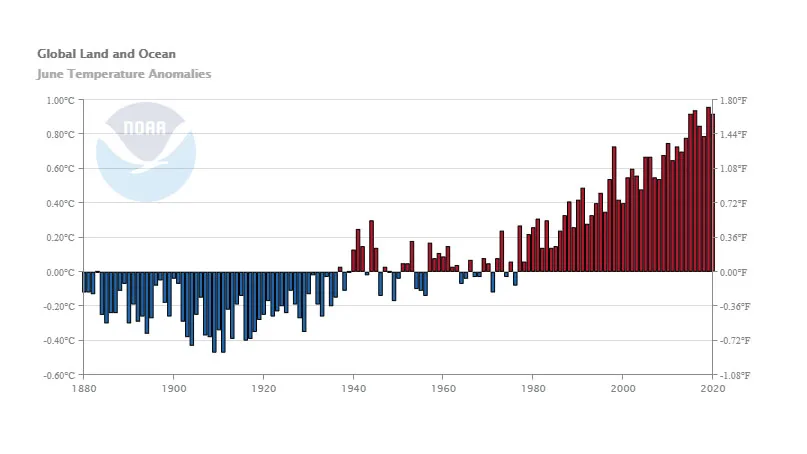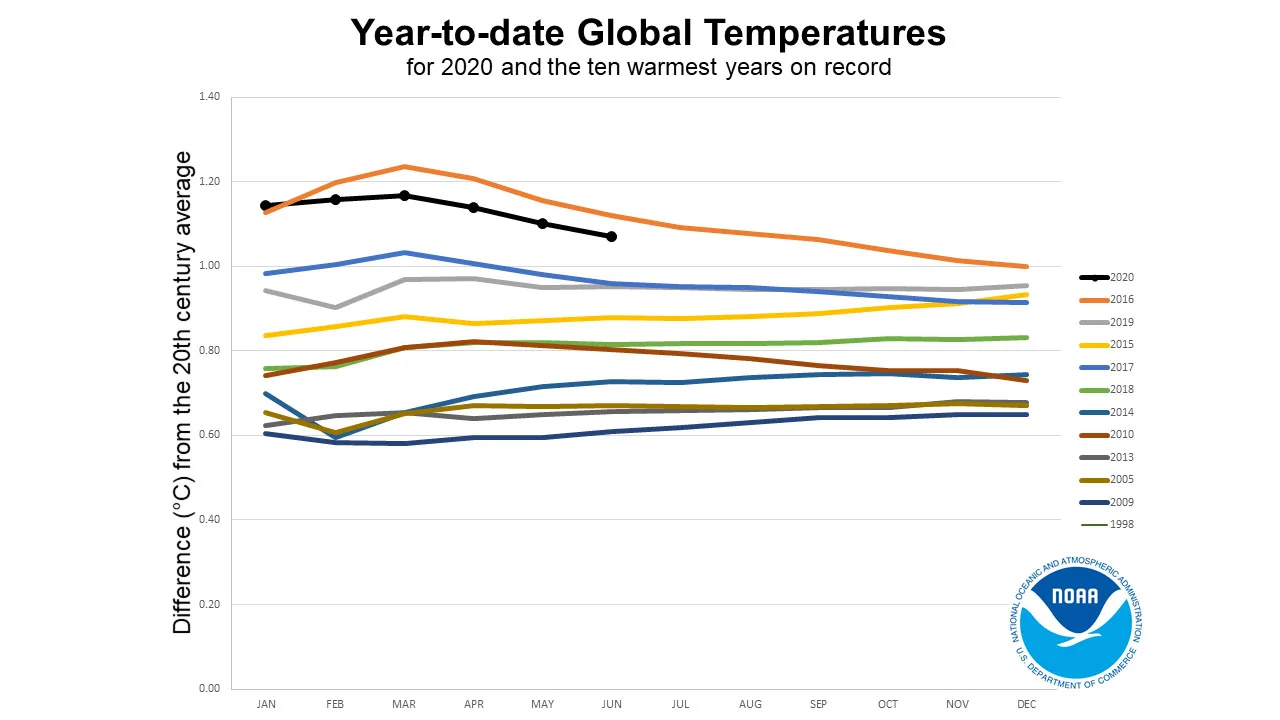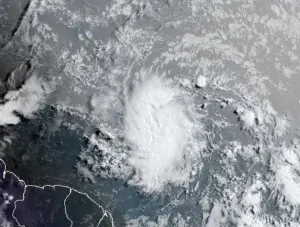
First half of 2020 saw near-record warmth for the planet. What can we do?
June was one of the warmest months ever recorded
NOAA, NASA, the Japanese Meteorological Agency and the Copernicus Climate Change Service have weighed in on June 2020 global temperatures. All have ranked it as one of the hottest months of June ever, capping off the first half of 2020's near-record warmth.
Where last month falls, exactly, depends on which climate record you consult. Earlier this month, Europe's Copernicus Climate Change Service found that June, at 0.53°C above the 1981-2010 average, was only 0.01°C shy of matching June 2019's record heat. According to NOAA, June 2020 was 0.92°C above the 20th Century average temperature, putting it as tied with 2015 for the third warmest month of June. Only June 2016 and 2019 were warmer in their records. The JMA has the month tied with June 2015 and June 2016 for the second warmest, at 0.41°C above the 1981-2010 average. Finally, NASA has June 2020 tied for the warmest June in their records, matching June 2019 at 0.93°C above the 1951-1980 average.

NASA's GISTEMP seasonal temperature records have 2020 tied with 2019 for the warmest month of June. Credit: NASA GISS
These climate records differ based on two factors. First, each of the four agencies collects and processes the data slightly differently, which helps ensure that our records are accurate. While the different methods used produce different results, comparing all the climate records still reveals the same trend in global temperatures. Thus, it reinforces the conclusion that global temperatures are on the rise.
Second, each record compares to a different 'baseline' average. NOAA compares their global temperatures to the entire 20th Century average, from 1901-2000. This gives a balanced baseline, reflecting the cooler temperatures during the early parts of the century, the mid-range temperatures of the mid-century, and the warmer temperatures of the later decades of the century. NASA's 1951-1980 baseline is an excellent 30-year period to represent the entire 20th century. Thus, the temperature records of both agencies tend to be very close or the same.

June global temperatures from 1880 to 2020 show the warming trend, year to year, of this summer month. Credit: NOAA
Copernicus and the JMA use the most recent 30-year climate normal for comparison, from 1981-2010. Since the average temperature for that period is warmer than the average temperature during the 20th century (or the 1951-1980 period), their records show a smaller temperature anomaly. The 1981-2010 climate normals will be replaced next year with a new set, from 1991-2020.
WHAT'S IN STORE FOR 2020?
According to NOAA, with June tied for 3rd warmest in their records, the chances for 2020 to beat out 2016 for the warmest year have dropped to just over 35 per cent. Given just how warm the year has been so far, though, 2020 has roughly a 77 per cent chance of displacing 2019 as the second warmest on record.

NOAA's 'horserace' graph of global temperatures plots year-to-date temperatures, month-by-month, to show the trajectory each year is on. Credit: NOAA National Centers for Environmental Information
Given just how warm the year has been so far, though, 2020 has roughly a 77 per cent chance of displacing 2019 as the second warmest on record.
The remarkable thing about the above graph is that the only year warmer than 2020, at the moment, is 2016 - the year where a record-setting El Niño was still influencing temperatures around the world. By comparison, while we saw the tail end of a very weak El Niño to start the year off, we are currently in neutral ENSO conditions. We could even see La Niña conditions by the end of the year. This reveals how much warmer the world has become, even in just the past 3 years!
A GREEN RECOVERY?
It's clear that something must be done to curb climate change, but what? Even with Covid-19 coronavirus lockdowns around the world, global greenhouse gas emissions have only dropped by about 15 per cent. Carbon dioxide levels in the atmosphere are still rising, and global temperatures are rising as a result. So, what can we do, going forward?
According to the World Economic Forum, the situation we find ourselves in now has revealed the inconsistencies, inadequacies and contradictions in the systems we use around the world. The ways that we produce energy, grow food, transport ourselves and our goods, and our relationship with nature, are all rooted in old ways of thinking that simply do not work anymore.
As we recover from this pandemic, we have an opportunity to build better systems, to replace what isn't working for us. They call it 'The Great Reset'.
The WEF says that The Great Reset is an effort to use the trillions of dollars governments are investing in the recovery in smart ways to "embed climate and environmental resilience into stimulus packages and recovery programmes."
Such a 'nature-positive' recovery would help the environment, making pandemics less likely. Also, by acknowledging the interconnected and interdependent nature of our global society, we could introduce new systems that would make us better able to deal with similar crises in the future.
"If there is one critical lesson to learn from this crisis, it is that we need to put nature at the heart of how we operate," Charles, Prince of Wales, said in a WEF statement. "We simply can't waste more time."
"The Great Reset is a welcome recognition that this human tragedy must be a wake-up call. We must build more equal, inclusive and sustainable economies and societies that are more resilient in the face of pandemics, climate change and the many other global changes we face," António Guterres, the Secretary-General of the United Nations, added in the statement.
Sources: NOAA | NASA | JMA | Copernicus | WEF
Top Photo Credit: Getty Images











